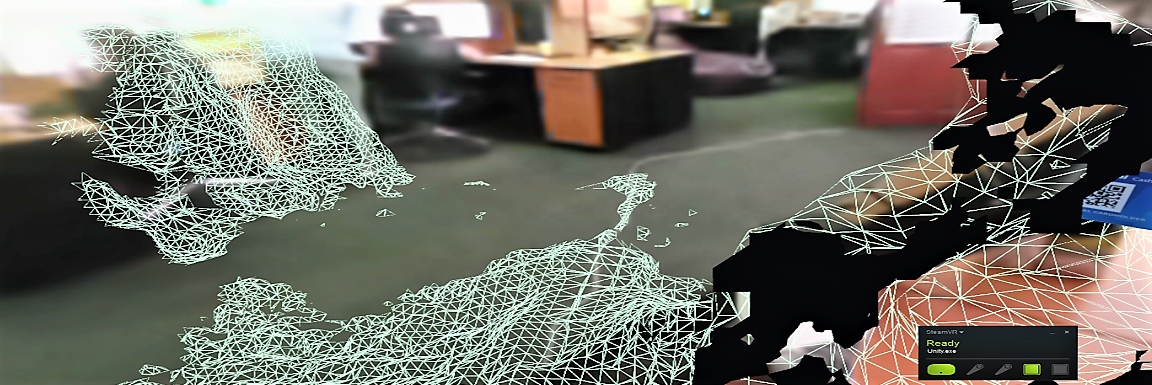For this review, we’ve taken into consideration two leading devices as of winter-spring 2018: ZED Mini and Vive Pro.
ZED Mini is a stereoscopic camera add-on for HMDs like the Oculus and Vive, infusing their VR-only feature sets with MR abilities where inside-out tracking turns a cumbersome HMD into something you’ll want to use on a daily basis.
With ZED Mini, StereoLabs offers dynamic lighting and shadow technology (similar to Microsoft Holographic) which allows you to interact with virtual objects using your hands, while the headset manages tracking and recognition. ZED Mini is an impressive kit that should push AR adoption and development, particularly among existing VR users.
Regarding Vive Pro, HTC announced, “a new set of tools allowing developers to build applications which take advantage of the Vive Pro’s stereo front-facing cameras, effectively turning the device into an AR headset dev kit.” The company also states:
“These tools allow the device’s cameras to capture depth, spatial mapping data, hand input, and seamlessly shift between VR and AR worlds.”
COMPARISONS
Field of view
Both the ZED Mini and Vive Pro effectively fill the headset from left to right and there is no perceivable difference between the headsets horizontally. (Vive Pro cameras = 96° and ZED Mini = 90° horizontal field of view.)
But for the vertical field of view, the Vive Pro's AR is significantly higher (80° vs 60° in ZED mini) and the user can see black borders at the top and bottom.
Depth Sensing
In Vive Pro (depth range about 2.5 meters) all objects, located near the headset, are detected very quickly and accurately. ZED Mini has a higher depth range, depth scanning is in real time, and it’s possible to load pre-scanned mesh into ZEDfu app.

ZED Mini
Performance
Maximum depth resolution for Vive Pro is just 480p with 90FPS and average latency is about 200ms. For ZED Mini the maximum depth resolution is 720p with 60FPS and average latency about 60ms.
ZED Mini renders real and virtual objects at the same resolution, whereas Vive Pro AR renders virtual objects at the full Vive Pro resolution of 2880x1600. This makes them look distinctly different from the 480p world they are supposed to be a part of.
Requirements
The minimum GPU for Vive Pro AR is GTX 970 (1060 recommended for AR and VR normal use). For ZED Mini the minimum GPU is GTX 1060 (recommended 1070) .
CONCLUSION
When choosing the right device for AR it’s clearly important to consider such aspects as: calibration, depth calculation, optimization, latency mitigation, etc.
It’s important to note that AR is not the primary function of the Vive Pro. As a standalone device, Vive Pro is good enough for out-of-the-box VR and AR solutions. We’re confident that its AR capabilities will be improved over time but currently, ZED Mini is a better AR solution due to a more comfortable and realistic AR experience.
ZED Mini is an especially good choice if you have Oculus or HTC Vive, as it can convert a VR headset into MR within few steps.

